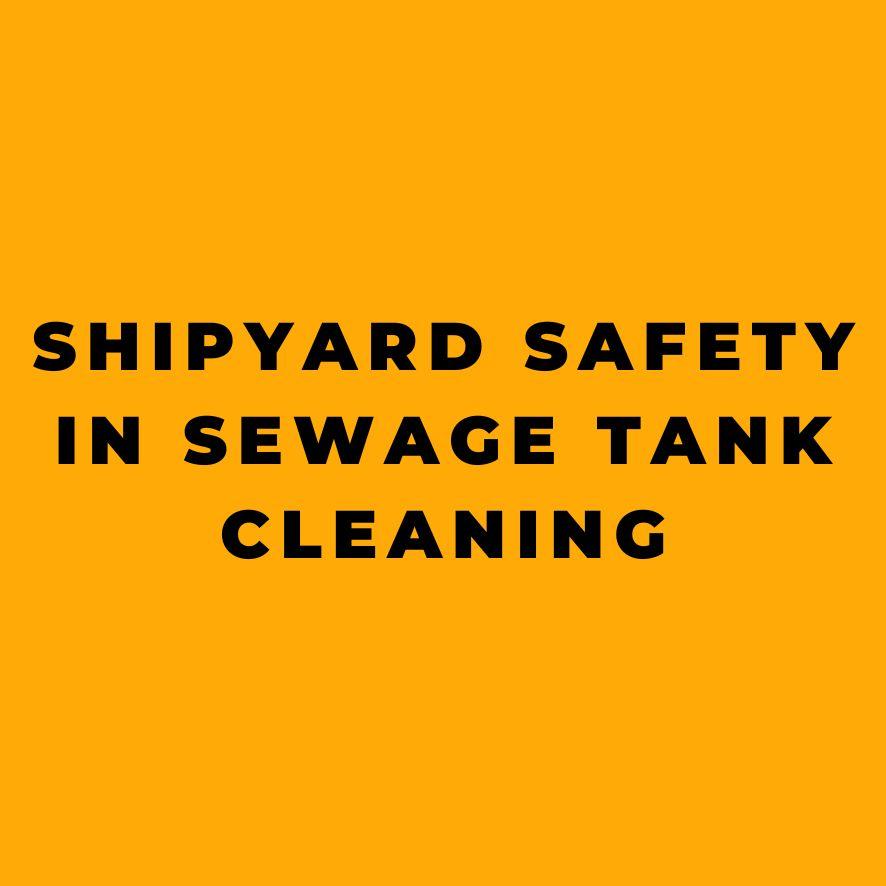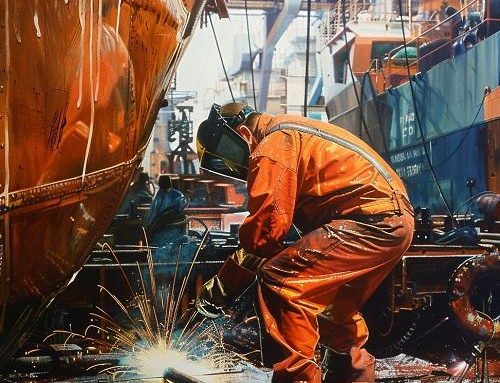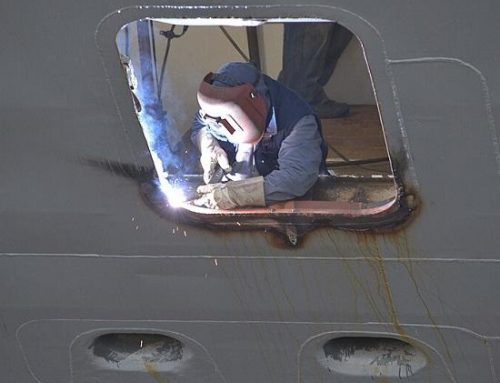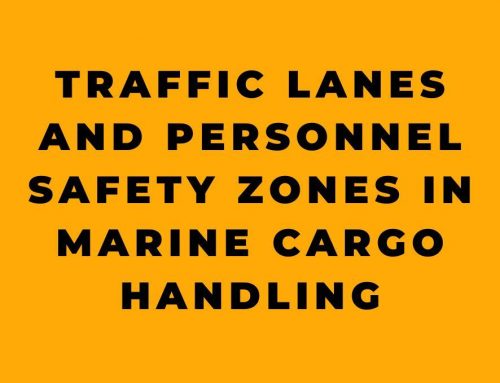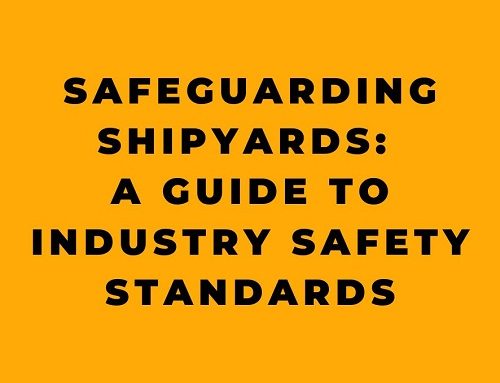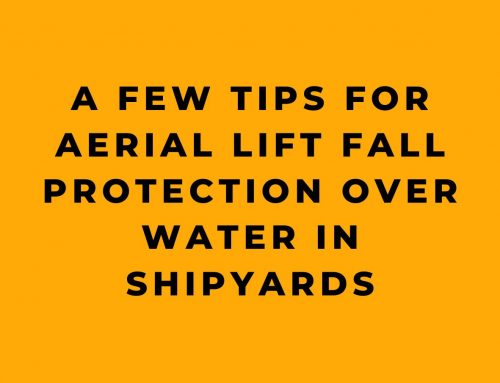Introduction
The cleaning and maintenance of sewage systems, known as Marine Sanitation Devices (MSDs) or Collection, Holding and Transfer Tanks (CHTs), on vessels is an important and necessary task. However, entering and cleaning sewage tanks, piping, and components presents significant dangers that can seriously injure or kill workers if proper precautions are not followed.
Workers performing these cleaning operations face hazardous atmospheres, biological pathogens, physical hazards from slippery and uneven tank surfaces, mechanical equipment dangers, and harmful chemical agents. Proper training, use of certified testing procedures and personal protective equipment, ventilation controls, tank entry procedures, and emergency planning are essential to mitigate these risks.
Understanding Sewage and Gray Water Systems Sewage or “black water” waste encompasses all waste contaminated by human excrement, including from toilets and urinals. “Gray water” refers to wastewater from sinks, showers, and other drains that does not contain human excrement. Both sewage and gray water tanks and piping need routine cleaning and maintenance.
Common Hazards
Entering and working in sewage tanks poses the following hazards:
Atmospheric Hazards
- Oxygen deficiency – Tanks may have insufficient oxygen levels for workers to breathe safely.
- Flammable gases like methane – Colorless and odorless methane can reach explosive concentrations.
- Toxic gases like hydrogen sulfide – Extremely toxic even at low concentrations and paralyzes smell at 100-150 ppm.
Biological Hazards
- Pathogens like bacteria, viruses, parasites and fungi that can cause severe illnesses through inhalation or ingestion.
Physical Hazards
- Slippery and uneven tank surfaces leading to falls.
- Limited access and obstructed exit routes.
- Sharp protruding structures that can lacerate skin.
Mechanical Hazards
- Unexpected activation of pumps or equipment.
- Leaking waste lines.
Chemical Hazards
- Sewage additives like ammonia, chlorine, formaldehyde.
- Cleaning agents and solvents.
Other dangers include heat stress, poor visibility, and inadequate ventilation.
Personal Protective Equipment
OSHA does not mandate Level A or B hazard suits for sewage tank work. However, impervious, full-body protective suits, rubber gloves, boots, hard hats and eye protection are strongly recommended to shield skin from liquids. Proper respiratory equipment is also required.
For entry and cleaning inside tanks, OSHA advises wearing full-face supplied-air respirators with escape packs. For exterior cleaning tasks, supplied-air or air-purifying respirators equipped with organic vapor and HEPA filters are recommended.
Additional safety items like two-way radios, extra lighting, first-aid supplies, emergency washing facilities, and neutralizing solutions should also be on hand.
Training Requirements
All workers must receive comprehensive training on recognizing tank hazards, using safe practices, identifying symptoms of exposure, and responding in emergencies. Instruction should cover:
- Confined space procedures
- Air monitoring
- Respirator selection and fit
- Ventilation techniques
- Hazardous waste handling
Atmospheric Testing and Monitoring
Both OSHA and the National Fire Protection Association (NFPA) mandate extensive atmospheric testing inside tanks prior to entry. As outlined in 29 CFR 1915.7, 1915.12, and 1915.14, a Marine Chemist or shipyard “competent person” must certify tanks before workers can enter.
Parameters that must be monitored:
- Oxygen – Maintain between 19.5% – 22%
- Combustible gases – Keep under 10% of lower explosive limit (LEL)
- Hydrogen sulfide – Limit to 10 ppm or under
Work cannot proceed if conditions present an immediate danger to life or health. Continuous ventilation and testing should be performed during cleaning activities.
Control Measures Before Entry
To prepare tanks and piping for opening and cleaning:
- Assess the sewage systems to identify all risks. Inform workers of the hazards.
- Secure all connected facilities like bathrooms or treatment systems.
- Seal off and divert influent waste streams.
- Lock out and tag all valves to prevent accidental activation.
- Place drip pans under openings to contain leakage.
- Follow confined space procedures – test atmospheres remotely before unsecuring entrances.
- Have Marine Chemist or competent person present when breaking into systems.
- Remove covers gradually while watching for changes in tank conditions.
- Install ventilation ducting before full opening to exhaust emissions.
- Cover work areas with plastic sheeting to prevent contamination.
- Pump out residual wastes before having workers access the inside.
Tank Cleaning Procedures
With openings secured and protective equipment on, workers can then enter and clean tanks using this general sequence:
- Remove bulk solid waste manually or with pumps/pressure washing.
- Scrape down hardened deposits manually.
- Pressure wash all surfaces.
- Pump out interior liquid wastes.
- Perform final rinse, sanitizing and drying.
Proper disposal protocols must be followed with all removed wastes. hoses, pumps tools, lighting equipment, and PPE must be thoroughly disinfected after finishing work.
Emergency Preparedness
As sewage tank entry is considered confined space work, specially trained personnel and rescue groups must be ready on-site to provide emergency assistance if needed. Proper communication systems are essential.
Applicable Regulations
Many OSHA standards help protect sewage tank workers, including:
- 29 CFR 1915 Subparts B, D and I – Confined Spaces and Other Dangerous Atmospheres
- 29 CFR 1915 Subpart Z – Toxic Metals and Hazard Communication
- 29 CFR 1910.147 – Permit-Required Confined Spaces
Relevant consensus standards have also been published by groups like the American National Standards Institute (ANSI) and NFPA.
Tank cleaning contractors should consult with the U.S. Coast Guard and other agencies if vessels will operate in regulated waters or discharge treated wastes.
Conclusion
The safe cleaning of sewage tanks in marine environments demands extensive preparations and precautions. But the strict use of certified testing contractors, personal protective equipment, ventilating systems, entry permits, and emergency rescue plans can successfully protect the health and safety of this vital workforce.
Staying current with both regulatory and industry best practices, while also investing in comprehensive worker training, are the most critical steps an employer can take. Workers as well must remain vigilant and fully adhere to established safety protocols when entering confined spaces like sewage tanks. With proper understanding of these hazards and standards like OSHA’s 29 CFR 1915 guidance, shipyard employers can develop and implement proven confinement entry programs to eliminate needless injuries and fatalities.


